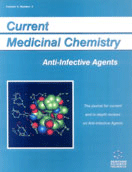Abstract
The aim of this review on the anti-infective properties of flavonoid compounds found in plants was to obtain a fresh perspective on the potential of these compounds to be developed into natural products with application potential in the pharmaceutical and agricultural industries. Flavonoids are the largest group of naturally occurring phenolic phytochemicals and more than 5000 have been described. Approximately 650 flavones and 1030 flavonols are known although most of these are glycosides of 200 flavonoid aglycones, in the case of flavones, and 300 in the case of flavonols. Small amounts of aglycones frequently are present and occasionally represent a sizable proportion of the total flavonoid compounds in or on the plant. It is estimated that about 2% of all carbon photosynthesized by plants, amounting to about 1 x 10 9 tons per annum, is converted into flavonoids or closely related compounds. In terms of the potential to develop flavonoids as natural products and to utilize it as anti-infective agents in either the agricultural, veterinarian or pharmaceutical industries, it can be said that the source of flavonoids, namely wild plants, is largely untapped. The potential of flavonoid compounds to be applied as anti-infective agents is reviewed instead of generalizing the vast other activities identified for this group of compounds. Antibacterial, antifungal and antiviral properties have been associated with individual or collective groups of flavonoids in the past. Some of the major advances, including the association of known flavonoids with the growth inhibition of specific microbes or viruses and the identification of novel flavonoids as well as the bioavailability and metabolism of flavonoids consumed by animals and man are discussed.
Keywords: flavonoids, anti-infective agents, application potential, natural products, review
 10
10

